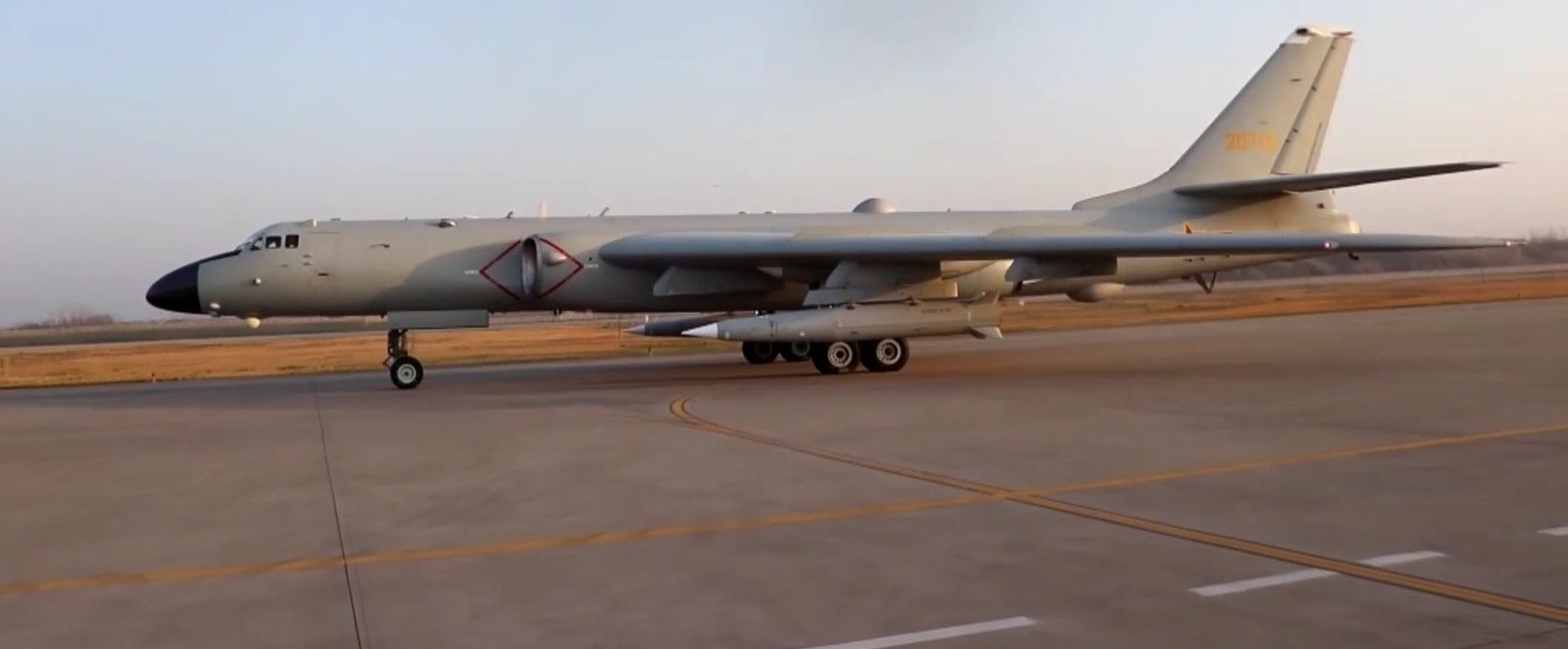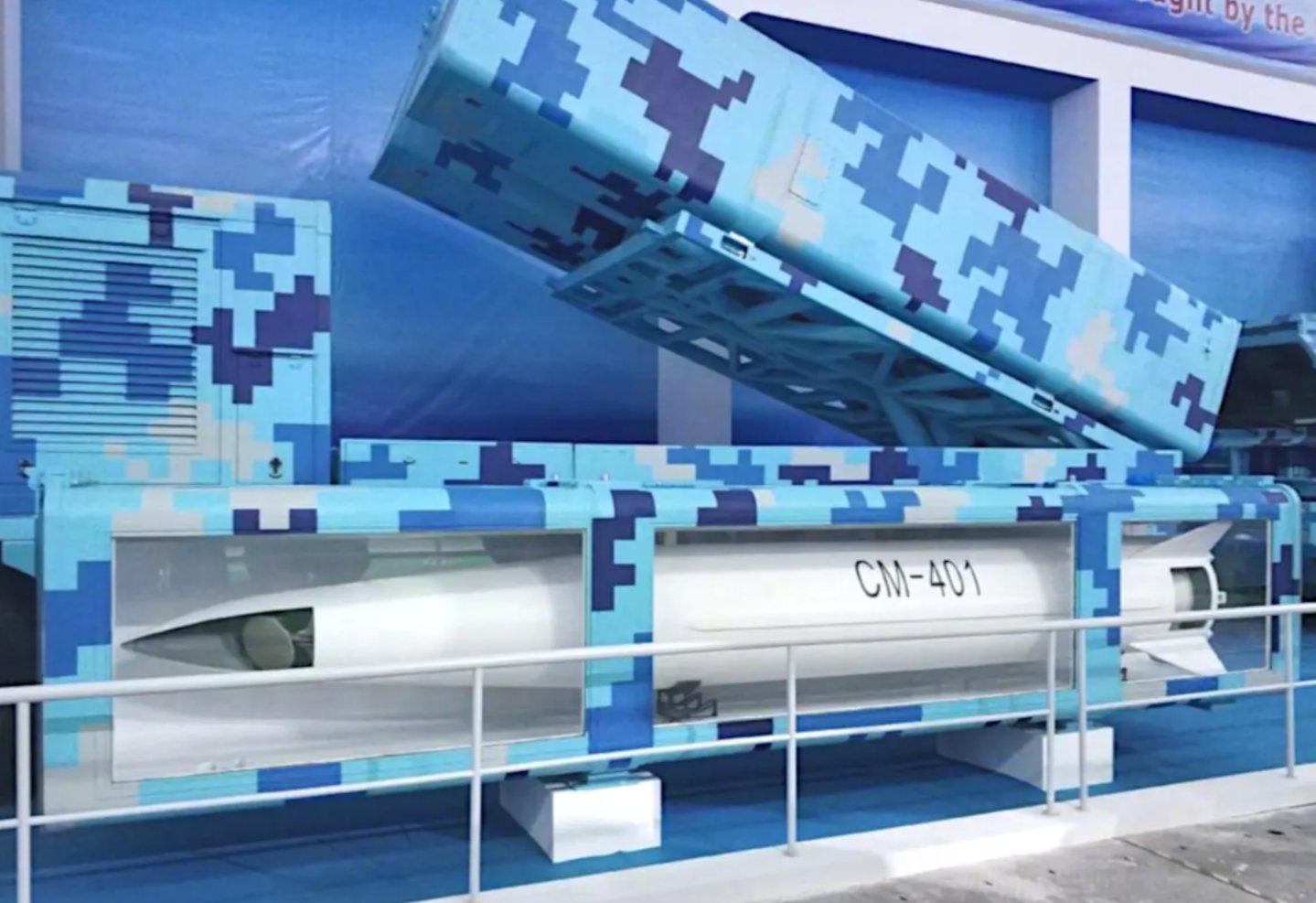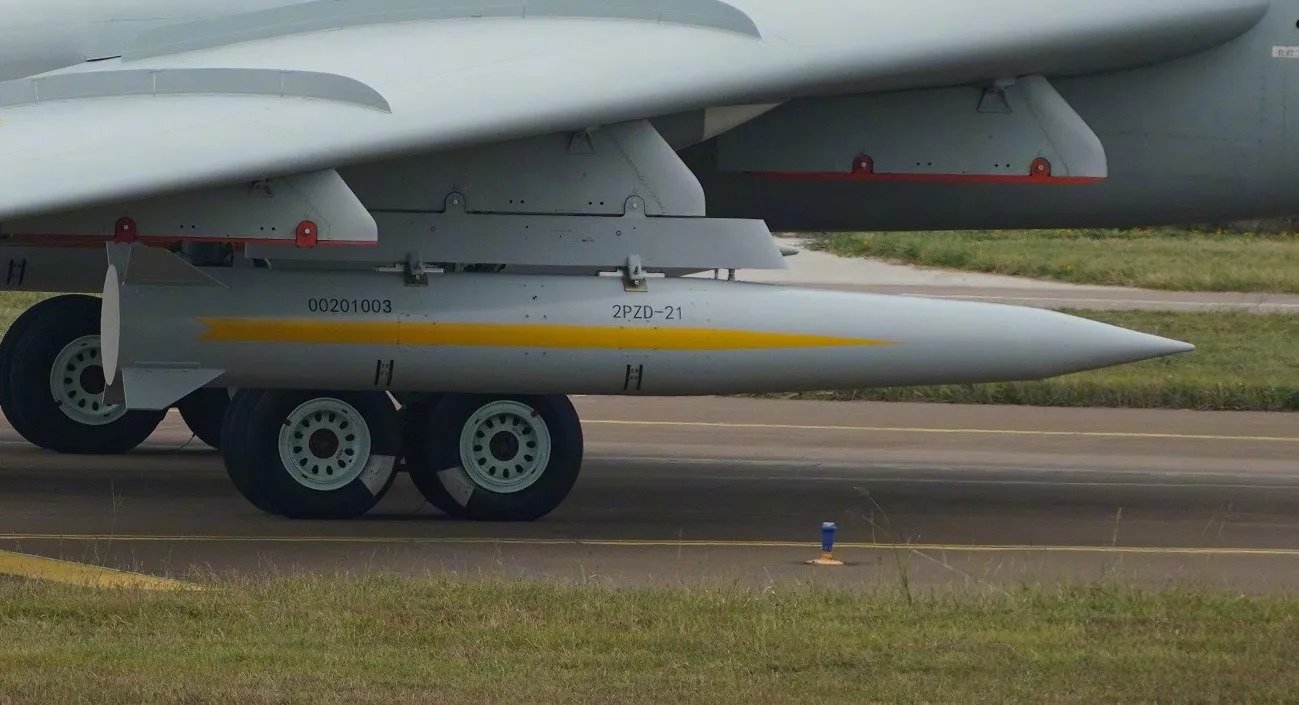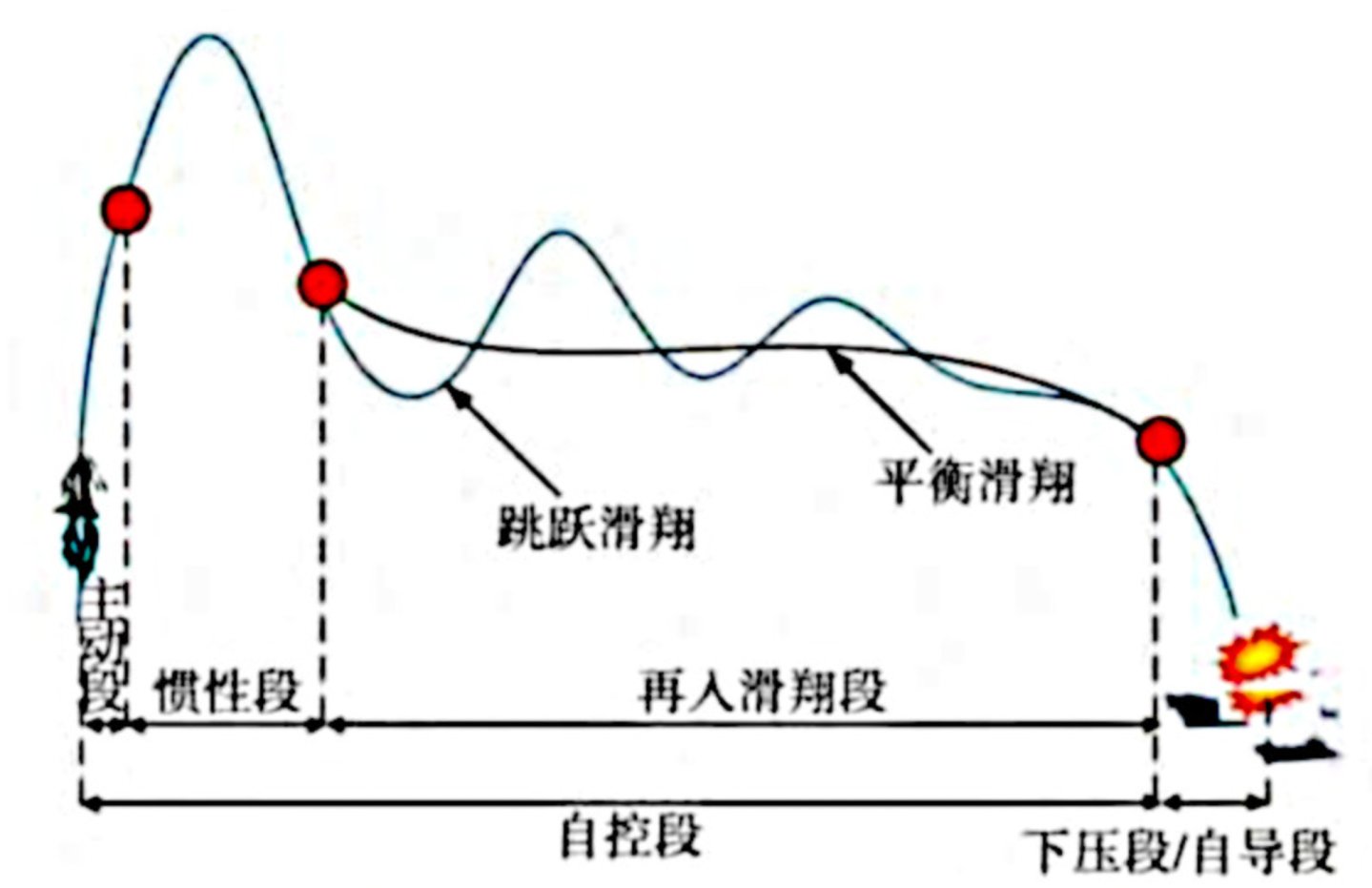China’s KD-21 air-launched ballistic missile (ALBM), a shadowy weapon that is widely seen as part of the country’s rapidly developing anti-shipping armory, appears to now be in operational service. The missile, carried by the H-6K bomber, first appeared when it made an official public debut at Airshow China in Zhuhai in November 2022. Until now, however, it had not been confirmed as being carried by aircraft assigned to a frontline unit.

Imagery has emerged showing an H-6K aircraft assigned to the People’s Liberation Army Air Force (PLAAF) 10th Bomber Division, carrying a pair of KD-21 missiles under its center-wing pylons. The images, which appear to have been taken during a recent military drill, were brought to our attention by Andreas Rupprecht, a long-term observer of Chinese military aviation and a TWZ contributor.
 A PLAAF H-6K taxies with KD-21 missiles under the wings. via Chinese Internet
A PLAAF H-6K taxies with KD-21 missiles under the wings. via Chinese Internet The 10th Bomber Division’s 29th Air Regiment, part of the strategically highly important Eastern Theater Command, flies the H-6K from Anqing, in Anhui province. The aircraft wear codes in the 20x1x sequence, matching those in the images.
 Another view of a PLAAF H-6K armed with KD-21s. via Chinese Internet
Another view of a PLAAF H-6K armed with KD-21s. via Chinese Internet Turning to the KD-21, when this was first identified at Airshow China in 2022, the missile had ‘2PZD-21’ stenciled on the side. You can read more about its surprise debut here.
 One of the inert ‘2PZD-21’ missiles under the right wing of the H-6K at Zhuhai in November 2022. via Chinese Internet
One of the inert ‘2PZD-21’ missiles under the right wing of the H-6K at Zhuhai in November 2022. via Chinese Internet 杰哥很狗仔😄
Video of the H-6K carrying an air launched ballistic missile, arrives at the Zhuhai airshow
Possibly capable of targeting moving ships pic.twitter.com/SAUy0pYHTZ
Overall, the ALBM concept is far from new, with designs dating back to the Cold War, although they are currently seeing something of a renaissance, with multiple nations around the globe now pursuing their capabilities.
At one point, it was suggested that the designation YJ-21 was applied to the missile, but it now appears to be known as the KD-21. Intriguingly, the KD-series designation refers to a land-attack missile, rather than an anti-ship missile (YJ-series).
The missile appeared again in a video published in May of 2024, showing an apparent test launch from an H-6K.
The KD-21 is, however, only the latest in a series of Chinese ALBMs. These have tended to be considered primarily as anti-ship weapons — often referred to as ‘carrier-killers’ based on their likely high-priority targets, but they can be used against many ship types. Pursuing various ALBMs optimized for the anti-shipping role also fits with their use as part of China’s fast-evolving anti-access/area-denial (A2/AD) strategy.
The KD-21 designation, combined with the fact that the missile is being issued, at first to the PLAAF, suggests that it might be primarily intended for land attack, rather than anti-shipping.
As such, the KD-21 might be closer in concept to the Russian Kinzhal (known in the West as the AS-24 Killjoy). This is a weapon that is launched from adapted MiG-31 Foxhound interceptors of the Russian Aerospace Forces. Kinzhal, which has been described, somewhat misleadingly, as a hypersonic missile, has been used by Russia in Ukraine, although it seems to have only achieved mixed success. There have been reports that Kinzhal can also be used as an anti-ship weapon, although this remains unconfirmed.
 A Russian MiG-31 armed with a Kinzhal missile on the centerline. Russian Ministry of Defense
A Russian MiG-31 armed with a Kinzhal missile on the centerline. Russian Ministry of Defense Another potential parallel with Kinzhal is the KD-21’s possible origins in a surface-launched weapon. While the Russian ALBM is an air-launched development of the Iskander short-range ballistic missile, the KD-21 looks like it might be an adaptation of the CM-401 anti-ship ballistic missile (ASBM), otherwise launched from a truck or ship. The CM-401 can also strike static land targets and reportedly has a terminal speed of between Mach 4 and 6.
 A mockup of a CM-401 on display at the Zhuhai Airshow in 2018. In the background is the truck-based launcher. via Chinese Internet
A mockup of a CM-401 on display at the Zhuhai Airshow in 2018. In the background is the truck-based launcher. via Chinese Internet As we have discussed before, whether the air-launched KD-21 is intended primarily to strike land or maritime targets — or both — the fact that it now seems to be in operational service is significant.
Whatever the target set, ALBMs are notably difficult to defend against.
Like many ballistic missiles, ALBMs arrive at their target with a hypersonic or near-hypersonic terminal velocity and a steep angle of descent. While this is hard enough to intercept, an added problem comes when the missile also maneuvers dynamically during the terminal attack phase.
The lessons of the Ukraine war suggest that ALBMs like Kinzhal are not immune to interception by high-end air defense systems. However, in the context of a future confrontation with China in the Indo-Pacific region, the KD-21 would be just one element with a layered and complex A2/AD strategy.
Not only would ALBMs arrive in considerable numbers, but they could also be accompanied by other types of missiles, ballistic and cruise, as well as drone strikes.
 A close-up of an insert version of the KD-21 missile at Zhuhai in 2022. via Chinese Internet
A close-up of an insert version of the KD-21 missile at Zhuhai in 2022. via Chinese InternetAlready, China can call upon a huge arsenal of ground-launched ballistic missiles, but having ALBMs delivered by H-6 provides a much greater reach and the possibility of more dynamic, less predictable targeting.
In its surface-launched form, the CM-401 has a reported range of a little over 180 miles, which will be extended when launched from the air. Meanwhile, the H-6K is understood to have a range of 3,700 miles. Certain examples are also equipped with probes so they can be refueled in flight, allowing them to range as far as the coast of Alaska, for example.
There are meanwhile suggestions that the basic CM-401 might be able to hit targets at much greater ranges, by using a ‘porpoising’ or ‘skip-glide’ trajectory. This involves the warhead pulling up into a steep climb at least once as it begins the terminal stage of its flight. In the case of the CM-401, this could potentially boost its range to around 600 miles. This kind of trajectory also makes it even trickier to intercept.
 A Chinese graphic showing a ballistic missile with the ‘porpoising’ or skip-glide trajectory associated with the CM-401. via Chinese Internet
A Chinese graphic showing a ballistic missile with the ‘porpoising’ or skip-glide trajectory associated with the CM-401. via Chinese Internet Clearly, a missile like this, whether being used against targets on land or at sea, could play a significant role in scenarios involving Taiwan. Even when launched from over the coast of the Chinese mainland, the KD-21 would be able to threaten targets on Taiwan’s eastern coast. By firing these missiles from other vectors, Taiwan’s problem of defending air bases, command centers, and other key military targets would be exacerbated.
Elsewhere in the Indo-Pacific theater, the KD-21 could be used to strike critical enemy installations along the First Island Chain and further out into the Pacific.
An official video from China’s People’s Liberation Army Air Force showing H-6 bombers taking part in a simulated attack on Andersen Air Force Base on Guam:

Overall, having H-6s equipped to deliver smaller, more numerous ALBMs — potentially against ships — makes them a very unpredictable threat to any potential adversaries. In particular, the H-6K/KD-21 provides an alternative where otherwise a longer-range ground-launched ballistic missile would be needed.
Meanwhile, the KD-21 is not the only ASBM available to the H-6.
There is at least one larger and longer-range weapon known by the Western codename CH-AS-X-13, which may carry the Chinese designation KF-21. You can read more about it here. Due to its size, the missile is carried semi-recessed on the centerline of the fuselage of the H-6N variant. According to a Pentagon assessment, this weapon is likely available in nuclear-capable and conventionally armed versions. Potentially, there exist two further variants of the missile, one with a warhead similar to the land-based DF-21D anti-ship ballistic missile, and another that may be topped with a hypersonic glide vehicle upper stage similar to that on the DF-17 medium-range ballistic missile.
An embedded Tweet with one of the best videos we have seen so far of the much larger CH-AS-X-13 ALBM:
Other sources indicate at least two sub-variants of the same weapon, differing in their warhead types. The first variant is thought to feature a ‘double-cone’ type tip, similar to that found on the land-based DF-21D anti-ship ballistic missile, while the second variant may feature a hypersonic glide vehicle (HGV) upper stage similar to that on the DF-17 medium-range ballistic missile.
For now, the apparent operational fielding of the KD-21 further underscores the continued importance of more modern versions of the H-6, the original design of which dates back to the 1950s. At the same time, the weapon reflects China’s continued effort to expand and increasingly diversify its already potent missile armory, with a notable focus on ALBMs.
Contact the author: [email protected]

 By The War Zone | Created at 2025-04-01 18:16:01 | Updated at 2025-04-02 20:58:31
1 day ago
By The War Zone | Created at 2025-04-01 18:16:01 | Updated at 2025-04-02 20:58:31
1 day ago








